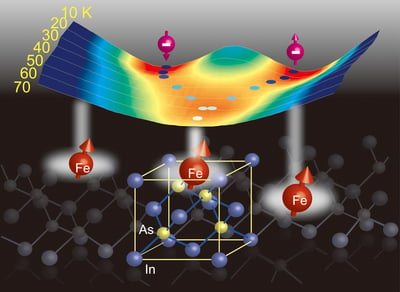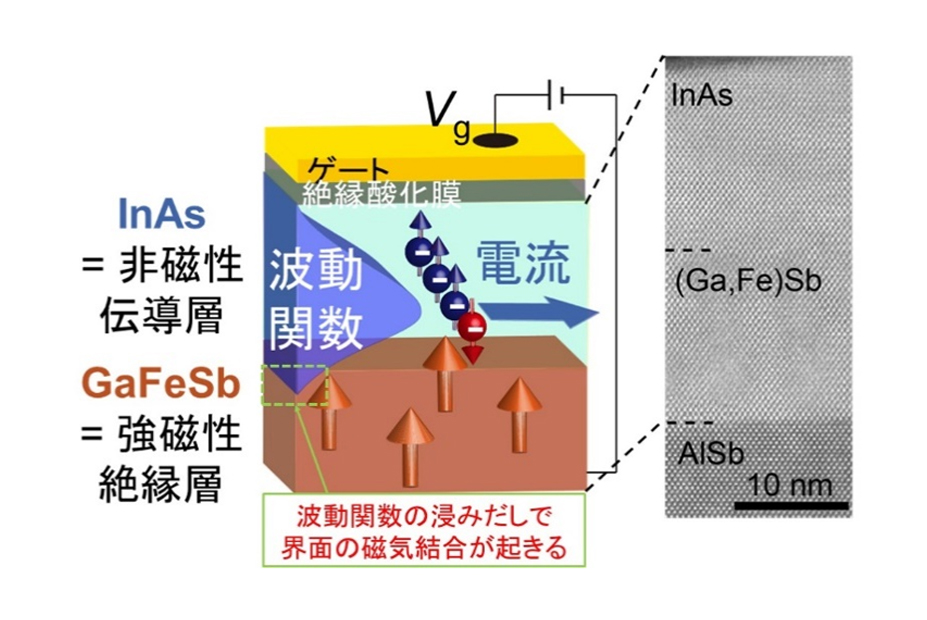Share this
Le Duc Anh, Pham Nam Hai & Masaaki Tanaka
Abstract
Large spin-splitting in the conduction band and valence band of ferromagnetic semiconductors, predicted by the influential mean-field Zener model and assumed in many spintronic device proposals, has never been observed in the mainstream p-type Mn-doped ferromagnetic semiconductors. Here, using tunnelling spectroscopy in Esaki-diode structures, we report the observation of such a large spontaneous spin-splitting energy (31.7–50 meV) in the conduction band bottom of n-type ferromagnetic semiconductor (In,Fe)As, which is surprising considering the very weak s-d exchange interaction reported in several zinc-blende type semiconductors. The mean-field Zener model also fails to explain consistently the ferromagnetism and the spin-splitting energy of (In,Fe)As, because we found that the Curie temperature values calculated using the observed spin-splitting energies are much lower than the experimental ones by a factor of 400. These results urge the need for a more sophisticated theory of ferromagnetic semiconductors.

Nature Communications: http://www.nature.com/articles/ncomms13810
Cornell University Library: https://arxiv.org/abs/1609.01379
These Related Stories
